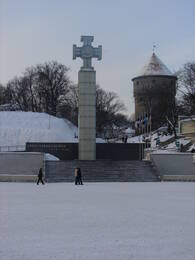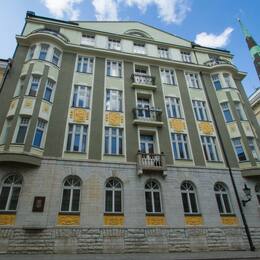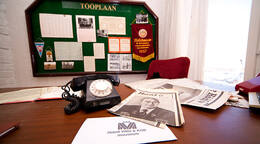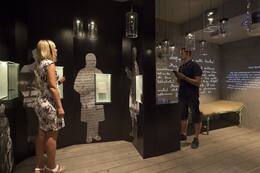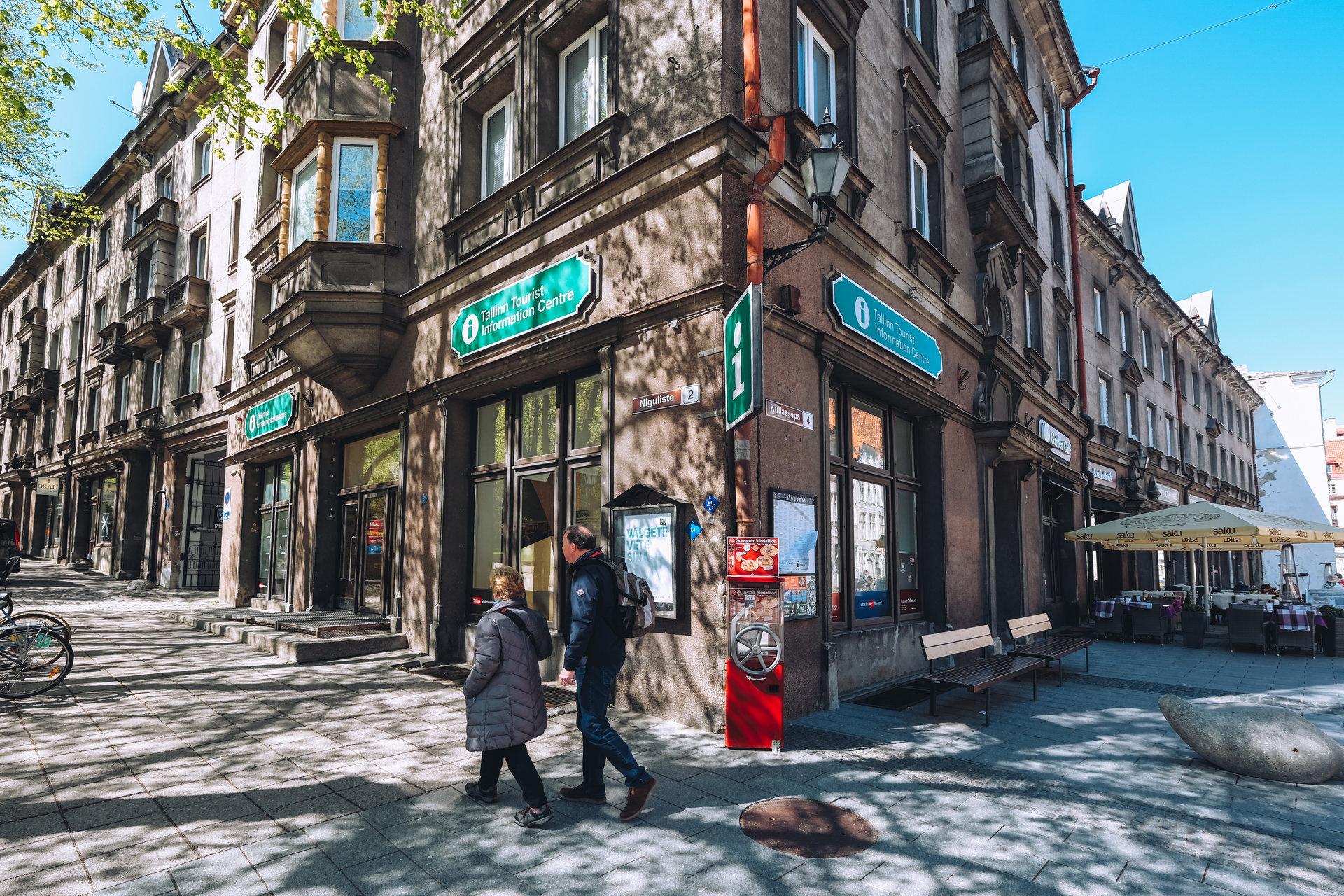Life in Estonia during the Soviet occupation
Day 1.
1 km
Tallinn
Practical info
- Public transport information visittallinn.ee
- Due to distances and time, 3–4 of the listed sights can be visited on this day
- Opening hours and ticket information for Estonian War Museum esm.ee. Guided group tours are available for max. 10 persons in a group. Booking required at least 3 working days before the visit
- Opening hours and ticket information for KGB Cells Museum vabamu.ee. Group visits should be booked in advance
- Opening hours and ticket information for Viru Hotel KGB museum sokoshotels.fi. Group visits should be booked in advance
- Opening hours and ticket information for Vabamu Museum of Occupation and Freedom vabamu.ee. Group visits and guided tours should be booked in advance. The museum exhibition includes interactive solutions and audio guides. It is recommended to plan 2 hours for the visit.
Sights
Estonia's Victims of Communism Memorial
The memorial is located in Maarjamäe, Tallinn. Estonia lost every fifth person of its population during the World War II and as a consequence of the terror imposed by the occupying regime.
The Memorial to the Victims of Communism is dedicated to the more than 75,000 Estonians murdered, imprisoned or deported by the Soviet authorities.
It consists of two parts: 'Journey', with name plaques of the victims; and a symbolical 'Home Garden', with informative texts and stone tablets marking sites of terror
Estonian War Museum - General Laidoner Museum
This museum, which has been housed in the mid-19th century historicist Viimsi Manor since 2001, conducts research into and both preserves and displays Estonian military history. Its predecessors were the Estonian War of Liberation Museum (founded on 19 January 1919) and a museum dedicated to General Laidoner established at the manor by decree of Viimsi Municipal Government in 1993. During the Soviet occupation, the manor was used by a naval intelligence unit: after the withdrawal of the Soviet Army, the building was in a dire state. The museum was founded by decree of Minister of Defence Jüri Luik on 26 February 2001. Since then, the museum has operated under the jurisdiction of the Ministry of Defence. Its main exhibition showcases wars fought in Estonia and abroad in which Estonians have participated. Part of the exhibition is dedicated to Commander-in-Chief Johan Laidoner, who owned the manor from 1923-1940. The military equipment hangar near the main building displays a variety of artillery pieces and vehicles.
KGB Prison Cells
This museum is located in the cellar of the former NKVD and KGB headquarters in the centre of Tallinn.
The building at 1 Pagari Street was home to one of the most infamous and feared pre-trial detention centres of the Soviet era, where many Estonian politicians, state officials, intellectuals, War of Independence veterans and even commoners were tortured and sentenced to death or prison. The unmodified cells are the epitome of the Red Terror and are now open to visitors. The museum consists of two corridors, six prison cells and one solitary confinement cell. The main exhibition, entitled ‘History of the KGB House’, recalls the atrocities committed there.
This address has had an interesting past. The residential building constructed here in 1912 was the headquarters of the Provisional Government of Estonia and the military high command during the War of Independence. Then, until 1940, the building housed the Ministry of War of the Republic of Estonia. In March 1991 the building became the head office of the Estonian Police. Today, 1 Pagari Street has regained its former residential use.
Hotel Viru and KGB museum
Hotel Viru in Tallinn was built in 1972. The hotel for foreigners also had to suit to the national security body, i.e KGB. The museum tells the story of more than just one hotel and the KGB. It is a treasure trove of stories of two different worlds - one which existed mostly on paper, of happy Soviet citizens living in friendship and never wanting for anything, led by a wise, all-powerful group of men in a place where there were never any accidents or catastrophes; and the other real world, which was a very different and a much tougher place to live in.
Please book in advance to visit the museum.
Vabamu Museum of Occupations and Freedom
Vabamu museum is situated in the centre of Tallinn.
A private museum, it opened in 2003 to showcase Estonian history from 1940-1991. The museum recalls stories from recent history highlighting both the value and fragility of freedom.
The main exhibition and the films shown at the museum provide an overview of the Soviet occupation, oppression, national resistance and the Singing Revolution.
The main exhibition, ‘Freedom Has No Limits’, is divided into five topics: ‘Inhumanity’, ‘In Exile’, ‘Soviet Estonia’, ‘Restoration’ and ‘Freedom’. Museum visitors can take an audio tour (in Estonian, Russian, English, Finnish, German, French or Spanish) to guide them on this immersive and retrospective journey through history. There are also activities for children, offering an unforgettable experience for the whole family.
Tallinn Tourist Information Centre
Places to eat
Places to stay and eat in Tallinn www.visittallinn.ee
Places to stay
Places to stay and eat in Tallinn www.visittallinn.ee






